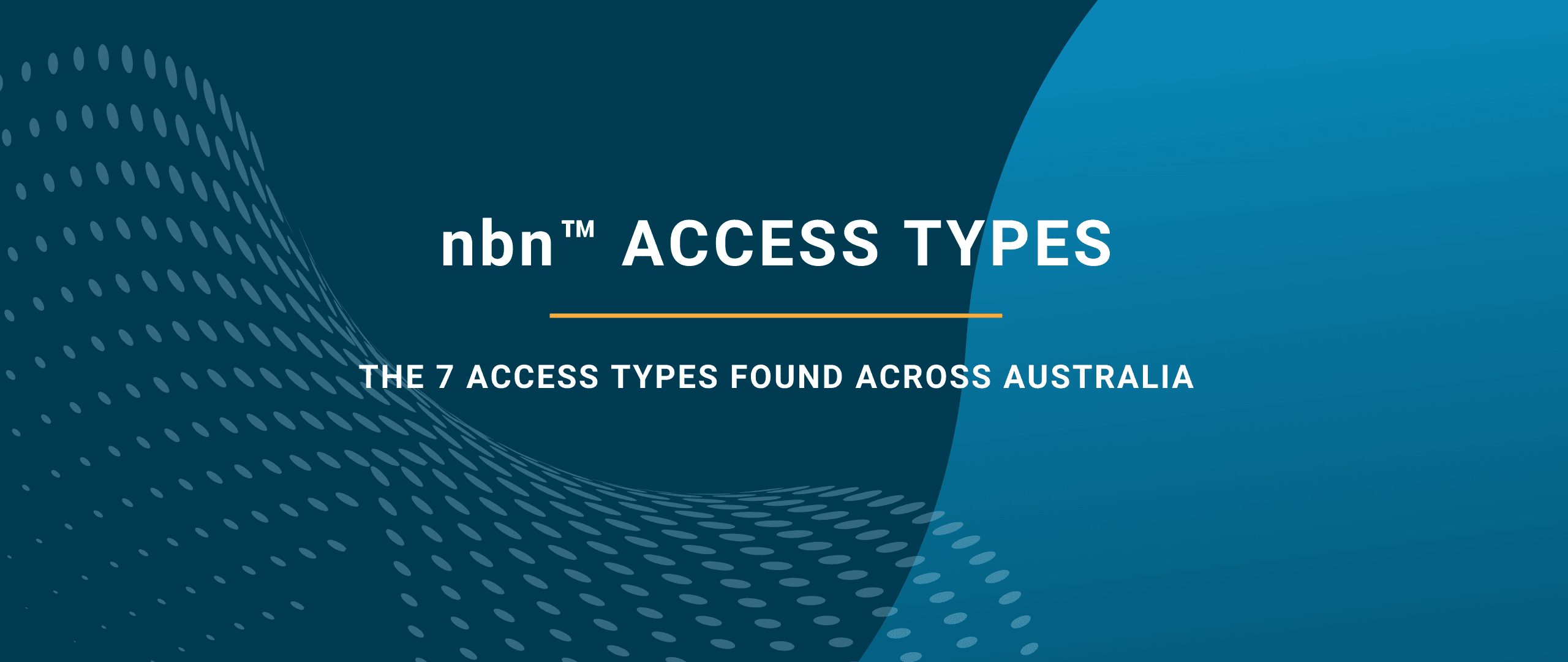The multitude of nbn™ variants in Australia exists because of the country’s diverse geographical and infrastructural conditions. When the nbn™ was initiated, it was planned as a Fibre-to-the-Premises (FTTP) network for most of the population.
However, due to various factors such as cost, logistical challenges, and changing government policies (more on nbn™‘s political challenges here), different technologies were incorporated. Here are a few reasons why so many nbn™ variants exist:
- Geographical Diversity: Australia’s massive size and diverse geography make implementing one type of connection everywhere challenging. Urban areas with dense populations are more suited to wired connections like FTTP, FTTN, or HFC. In contrast, remote and rural areas are better served by wireless or satellite connections, like Fixed Wireless or Sky Muster satellite service, where laying physical cables would be logistically challenging or cost prohibitive.
- Existing Infrastructure: To speed up the rollout and reduce costs, the nbn™ has used existing telecommunications infrastructure where possible. This includes the copper networks used in FTTN, FTTC, and FTTB connections and the coaxial cable network used in HFC connections.
- Cost and Speed of Rollout: Different technologies have different costs and timelines for installation. FTTP, while offering the best performance, is also the most expensive and time-consuming to install. On the other hand, technologies like FTTN and HFC, which utilise existing infr astructure, can be rolled out faster and at a lower cost.
- Political Decisions: The nbn™‘s rollout has also been influenced by changing government policies. The initial plan under the Labor government was for a majority FTTP network. Still, this was changed to a ‘multi-technology mix’ under the subsequent Coalition government, which prioritised a faster, less expensive rollout.
THE DIFFERENT nbn™ ACCESS TYPES
Here are the different types of nbn™ access types and how each one differs in terms of design.
Fibre to the Premises (FTTP)
FTTP is considered the gold standard of nbn™ connections. In this setup, a fibre optic cable runs directly from the nearest available fibre node to your premises.
FTTP offers some of the fastest speeds on the nbn™, with a potential for future upgrades to increase this even further. However, it’s also one of the most expensive and time-consuming types to install, which has limited its rollout.
Fibre to the Node (FTTN)
FTTN technology involves running a fibre optic cable to a central node in your local area, and then using the existing copper telephone network to connect individual premises to this node. While FTTN is faster to deploy and cheaper than FTTP, it tends to offer slower speeds, especially for premises that are a long distance from the node.
The quality of the existing copper network can also impact the connection’s reliability and speed. This service is similar in design and capability to VDSL in NZ and is terminated on a RJ11 port, whereas all other variants are terminated via RJ45 ports.
Fibre to the Curb (FTTC)
FTTC, or sometimes (and seldomly) referred to as Fibre to the Distribution Point (FTTDP), is a sort of hybrid between FTTP and FTTN. The fibre is extended closer to the premises, reaching a distribution point near the curb or driveway.
From there, the existing copper line is used to make the final connection. FTTC offers better performance than FTTN but falls short of FTTP’s potential. It’s a compromise, balancing cost, performance, and rollout speed.
Fibre to the Building (FTTB)
FTTB is typically used for apartment blocks and similar multi-dwelling units. A fibre optic cable is run to the building’s communications room, and existing technology (usually copper) is used to connect individual apartments.
Speeds can be quite good, depending on the quality of the building’s internal wiring.
Hybrid Fibre-Coaxial (HFC)
HFC uses the existing ‘pay TV’ or cable network, if available in your area. The network comprises a mix of optical fibre and coaxial cable, providing a fast and reliable connection.
However, the actual speeds can vary depending on network congestion and the quality of the coaxial cabling in your area.
Fixed Wireless
In areas where laying cables is not feasible, NBN provides a fixed wireless connection. This technology uses data transmitted over radio signals from a transmission tower to an antenna installed on the premises. (Lightwire Rural offers a similar service to rural households across New Zealand’s Waikato and Bay of Plenty regions).
While speeds can be decent, they are often affected by factors such as weather conditions, signal strength, and congestion.
Satellite (Sky Muster)
For the most remote areas of Australia, NBN provides connectivity via two Sky Muster satellites. While the service can reach places other technologies can’t, it offers the slowest speeds and highest latency.
It’s often seen as a last resort for those where no other connection types are possible, or at least it was until the advent of Starlink in 2022.
Everything nbn™ Explained
The team is finishing up the upcoming playbook that gives you the detail needed to sell Australian nbn™ internet services effectively. From high-level market intel to service-specific details, it’s all covered.


